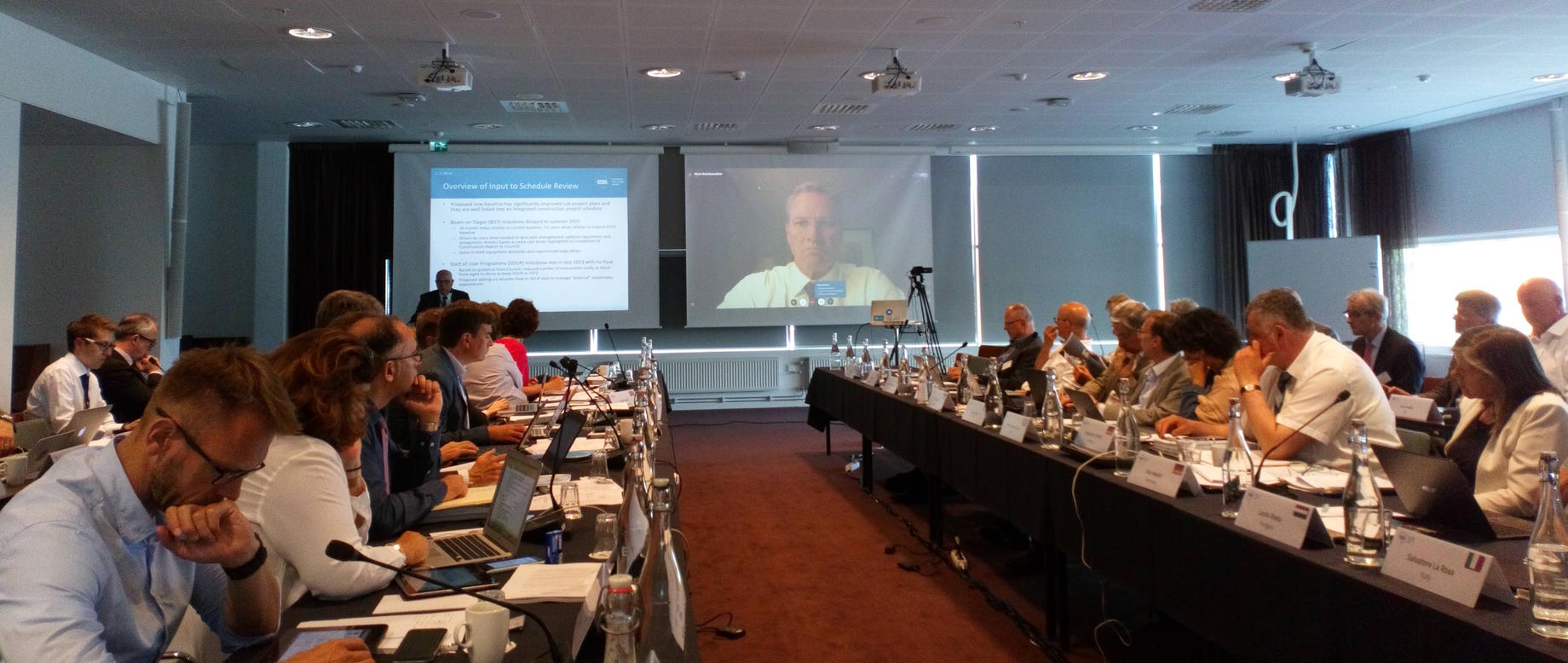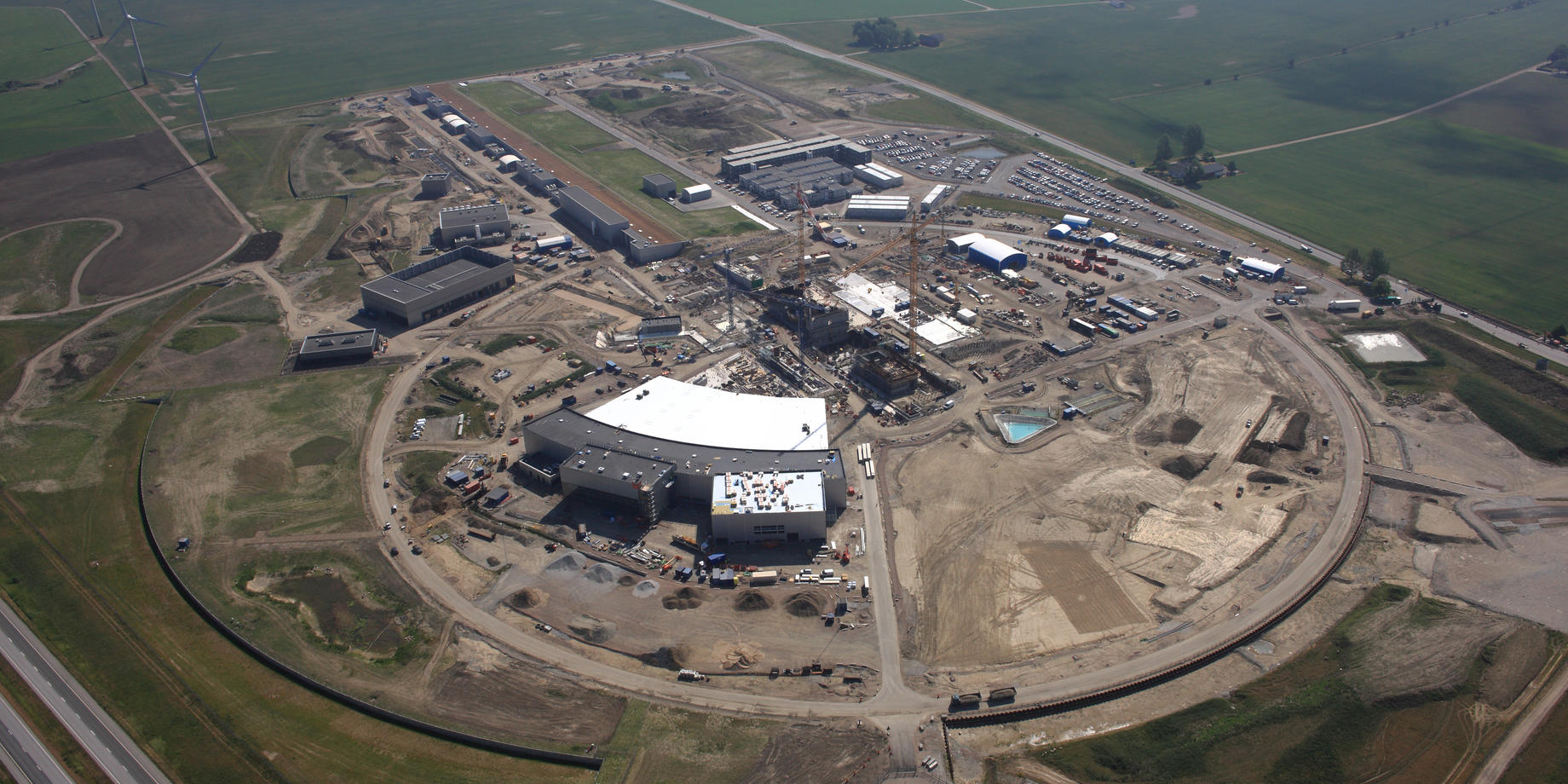
The ESS Council has endorsed the project’s new schedule to completion as the appropriate planning basis for the facility’s construction. Through a detailed analysis of tens of thousands of interlinked work packages, ESS management has addressed Target Building delays while maintaining the 2023 milestone for the start of the user programme.
LUND—The European Spallation Source ERIC (ESS) Council met in Lund June 4-5 for their 13th meeting. At the top of the agenda was the reassessment of the ESS baseline schedule undertaken by ESS management over the past several months. The new schedule for completion, which will maintain the key milestone to begin the scientific user programme in 2023, has now been endorsed by Council and the ESS member states.
“Through an adjustment of our plans we have managed to keep the start of the ESS scientific user program as foreseen in 2023,” said ESS Director General John Womersley. “This is in spite of delays in completion of the Target Building, which will result in the start of neutron production later than originally planned.”
Tens of Thousands of Interlinked Work Packages
To establish the new schedule, tens of thousands of interlinked work packages were scrutinised by ESS, along with hundreds of in-kind deliveries, encompassing a top-to-bottom reassessment of the schedule for completion.
The original ESS timeline was established before construction began in 2014, and has now been impacted by building delays resulting from ESS’ implementation of uprated seismic and security standards adopted in Sweden, and indeed globally, in recent years. Primarily impacting the design and construction of the ESS Target Building, the strengthened standards were formulated in the aftermath of Fukushima and amid a general increase in concern over antagonistic threats around the world.
Instrument Commissioning to Begin in 2022
ESS Council first acknowledged the impact of the Target Building delays in their December 2017 meeting. The project-wide assessment, completed in the spring, was subjected last month to a review by a panel of independent experts. This committee has endorsed the new plan and supports ESS’ approach to solving the scheduling challenges. Chair of the external review, Mark Reichanadter of the SLAC National Accelerator Laboratory in the US, delivered the committee’s report to Council on Monday.
“The review committee was duly impressed by ESS’ excellent progress toward delivering the most powerful neutron source facility in the world,” said Reichanadter. “The revised schedule is well thought out and based on sound methodology, the results of which the committee endorses.”
ESS’ approach to the new schedule has also been reviewed by the ESS Scientific Advisory Committee (SAC). The new plan has the goal to start instrument commissioning in 2022, with early scientific experiments to be carried out on the first three instruments as soon as possible thereafter. This is also the goal approved by Council in this week’s meeting.
The ESS project stands now at 45% complete. Civil construction is well advanced, with several buildings transferred from the construction contractor to ESS for installation and commissioning work. Key parts of the accelerator are being installed, with other accelerator and target components in different stages of prototyping and production at in-kind partners across Europe. The construction of most of the facility’s scientific instruments has moved into detailed design, while news from the site demonstrates a steady march toward completion.

























